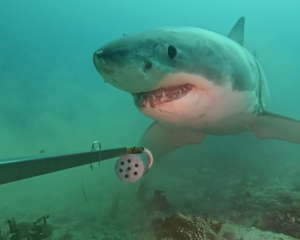
Maritime New Zealand says they include initially carrying crew and rail freight only, with no dangerous goods or passengers, and a tug escort when not in Cook Strait.
There were allegations from coalition government partner New Zealand First on Wednesday the accident last month happened after "someone put the autopilot on, went for a coffee, and then couldn't turn the autopilot off in time when that someone came back".
A document sent to staff last week - leaked to the media this week - said the cause appeared to have been the autopilot accidentally being change to the wrong course, which took time to undo.
Just why it was not immediately able to be cancelled "is part of the ongoing investigation", the document said.
"This is a safety bulletin from Interislander and it was sent out to masters and deck officers, Wellington harbourmaster Grant Nalder told Morning Report on Thursday.
"The instruction was for this to be posted on crew notice boards for a period of 30 days from when it was issued, which was last Friday."
He said it outlined exactly what was believed to have happened, at least at this early stage of multiple investigations.
"[The Aratere] departed Picton in line with normal conditions and on time, and as the vessel passed Mabel Island - which is a short way out of the berth - the team switched from hand steering onto autopilot.
"It seems that from that point, a crew member has inadvertently hit an execute button which has caused the vessel to alter its course in a way it would do around about one nautical mile further along. But of course, this has happened early and steered it towards the shore.
"The really interesting thing about this is of course, the crew after that point struggled to return it to manual steering mode, and it took around about a minute before the crew was able to apply reverse thrust and have control of the steering.
"But by that point, unfortunately, it was too late and the boat - as we all know - went nose-first into Titoki Bay."
Nalder said it was specifically pointed out as a hazard in the bulletin that a "single touch" of this button could cause the ship to change course.
"The document says that the safety committee will appoint a sub-committee to review vessels control systems - I'm assuming that this means the vessels in the Interislander fleet - and identify buttons that a single activation of could directly control the vessel's movements. You can imagine how this is a pretty significant hazard for these boats.
"It also recommends that bridge teams on the boats hold refresher training to ensure that functions of the autopilot and steering control systems are fully understood, and also that they're very clear on how to operate their emergency steering and regain control of the ship from autopilot.
"It also points out some recommendations regarding when autopilot should be used, such as not being an autopilot in any berthing or unberthing situations.
"But most interestingly enough, it points out the area between the Picton berth and a line that runs from Wedge Point to the Snout - and of course, Titoki Bay is well within that area.
"So according to the safety report, they would have much preferred that the ferry was not running on autopilot so soon out of the Picton berth."
Maritime New Zealand and the Transport Accident Investigation Commission (TAIC) were running independent probes into the incident, in which no one was injured. The Interislander service is run by state-owned enterprise KiwiRail.
"KiwiRail say that the bulletin was issued as a part of standard maritime procedure to ensure the crew has awareness of what happened after a serious incident," Nadler said.
"They point out that it doesn't replace the three full investigations that they, Maritime New Zealand and the [TAIC] are conducting into the incident.
"They also go on to state that the autopilot on Aratere is not new and has been operating since 2007."
New Zealand First has refused to elaborate further on its coffee break allegation. Labour leader Chris Hipkins was unimpressed with the party posting the claim to social media, rather than sharing whatever information it had with investigators.
"[New Zealand First leader] Winston Peters is the deputy prime minister in the government, I think he should have a slightly higher standard for himself than that."
He said he had seen no evidence of the claim.
Prime Minister Christopher Luxon, overseas at a NATO conference, said there would be "a lot of stories and rumour around what actually did or didn't happen".
Asked if he was comfortable Peters - the deputy prime minister - had been among those commenting on what might have caused the grounding, Luxon said he had not seen what Peters had said or done, but a process was in place and the government would respond once the reports were completed.
"We have a TAIC investigation up and running and also a Maritime New Zealand investigation up and running. I'll wait to see those formal reports before I pass any comment."
The Merchant Service Guild's vice president, Ian McLeod , said, considering the circumstances, the Aratere crew "did exactly the right thing in the very short amount of time available" to prevent an even worse accident.














